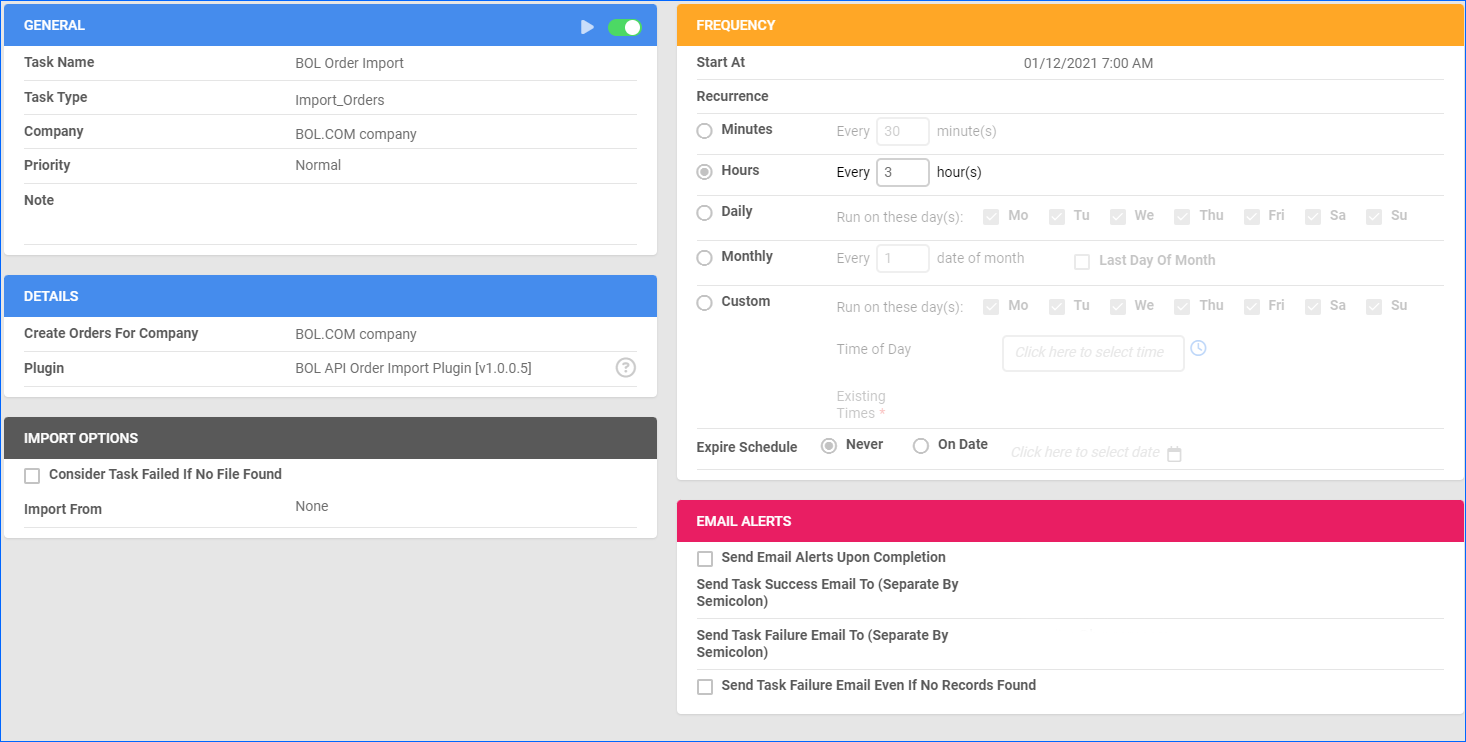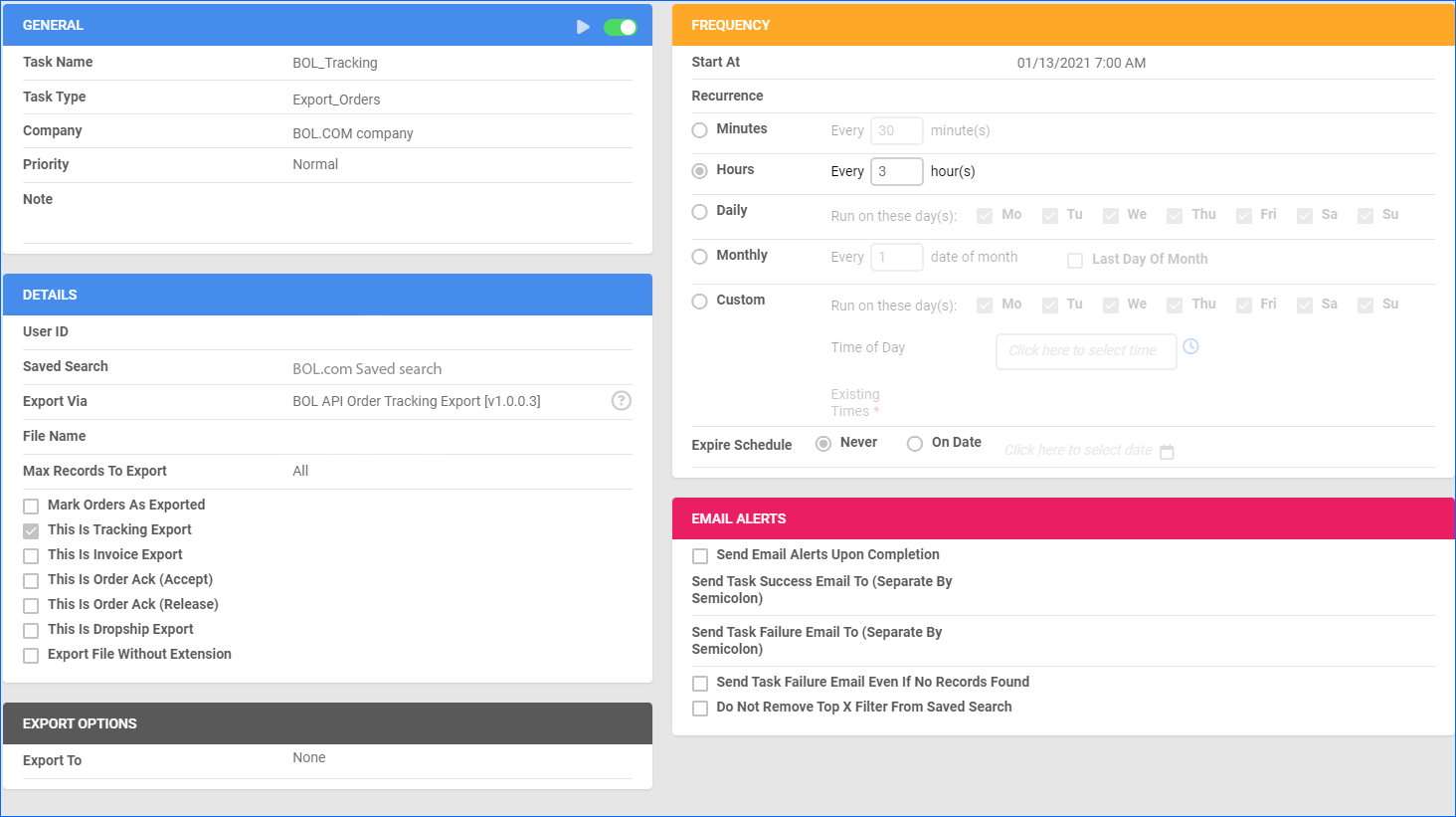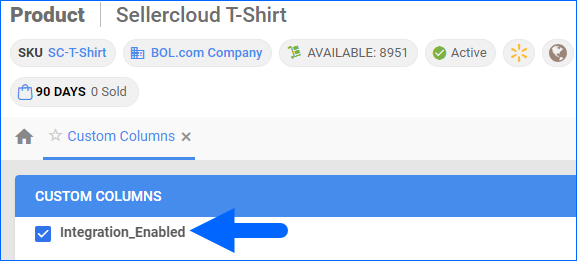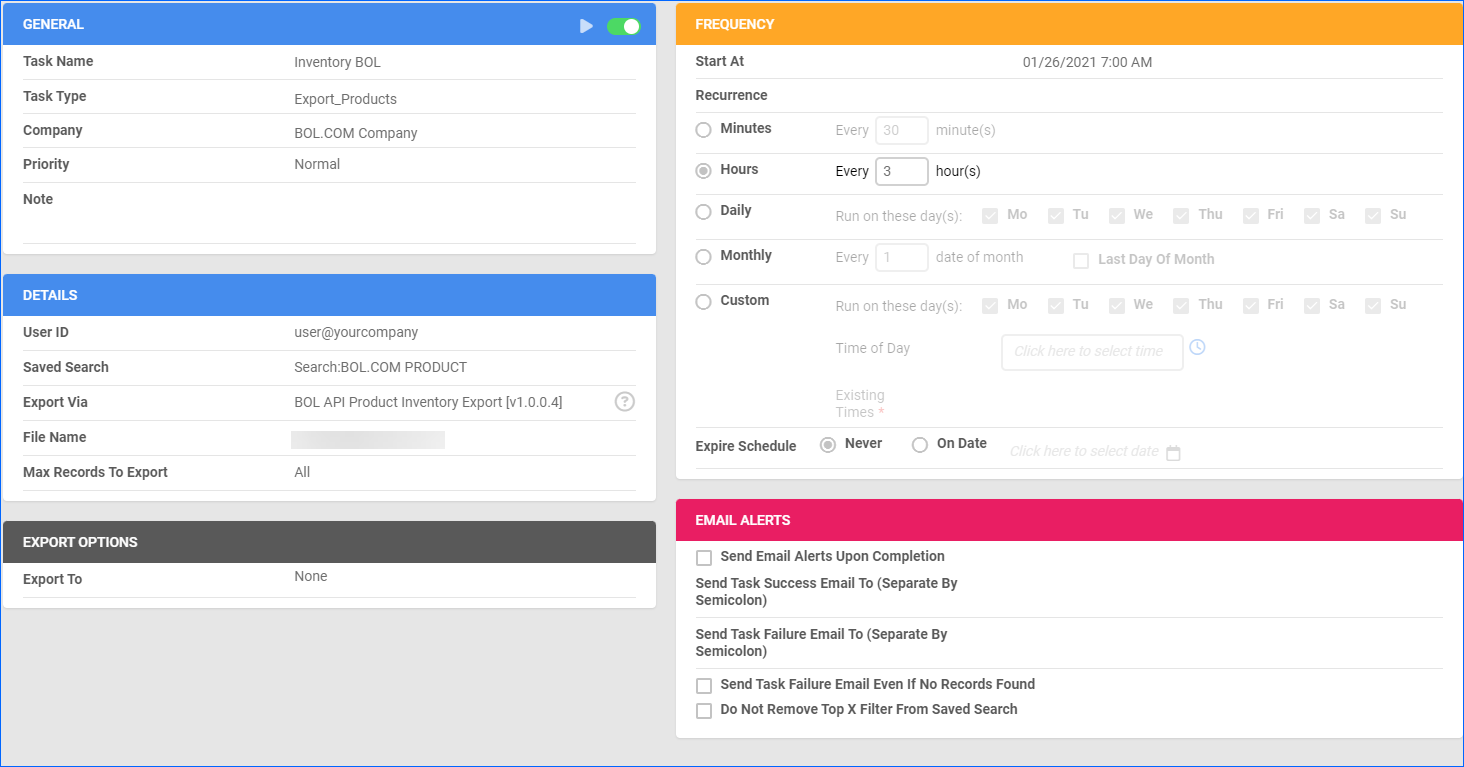Overview
BOL.com is a Netherlands-based online store offering a wide range of consumer products, including music, films, electronics, toys, jewelry, watches, baby items, gardening supplies, and DIY tools.
Integrating BOL.com into your Sellercloud account allows you to seamlessly import orders, upload tracking information, and ensure your BOL.com store is always up-to-date with the latest inventory data. The integration works through API, transmitting information between the two services via plugins and Scheduled Tasks.
If necessary, you can open a ticket with Sellercloud Support to request additional customizations or other plugins for this integration. Any such modifications will be billable.
Prerequisites
Before you can integrate BOL.com with Sellercloud, complete the following requirements.
First, obtain a Retailer API token for your BOL.com Retailer Account. Refer to BOL’s documentation for additional details and steps.
Sellercloud Support
Open a ticket with Sellercloud Support and request that the BOL.com plugins be installed on your server:
- BOL API Order Import Plugin – Imports orders from BOL.com to Sellercloud.
- BOL API Order Tracking Export – Exports tracking information from Sellercloud to BOL.com.
- BOL API Product Inventory Export – Exports inventory from Sellercloud to BOL.com.
Custom Company Settings
Create the following Custom Company Settings in the company designated for the integration:
- BOLAPI_ClientID – Obtained from BOL.com and used to authenticate the API connection.
- BOLAPI_ClientSecret – Obtained from BOL.com and used to authenticate the API connection.
- BOLAPI_UseTestAPI – Used for testing the API connection via a non-production server.
- BOL_ShippingMappingProfileID – Used by the BOL API Order Tracking Export plugin. Supports shipping method mapping through an export mapping profile.
- (Optional) BOLAPI_WarehouseIDs – Used by the BOL API Product Inventory Export plugin. Sellercloud exports the available inventory from the selected warehouses for non-kit items and the total available inventory for kits. Enter the warehouse IDs, separated by a comma. Example: “109,124,133“.
Custom Product Columns
Create the following Custom Product Columns:
- BOL_EAN – A unique product identifier that you specify on BOL.com.
- BOLAPIOfferID – Used by the BOL API Product Inventory Export plugin, it is BOL’s internal identifier for update and delete requests.
- (Optional) BOL_Enabled – Enable only specific products for BOL.com integration. Set to True for any products you want to send with the Inventory Export plugin.
Order Import
The BOL API Order Import Plugin imports order information from BOL.com. The order items are matched by their EAN, which is compared to the BOL_EAN Custom Product column in Sellercloud. If the order contains a shadow product, the plugin will check the shadow parent.
Automate Order Import
To create a Scheduled Task that imports orders:
- Navigate to Settings > Scheduled Tasks > Manage Scheduled Tasks.
- Click the green + icon: Create New Scheduled Task.
- Complete as follows:
- Click Task Type and select Import Orders.
- Set the Task Name.
- Select the Company.
- Select the Start Time.
- Click CREATE.
- The newly created Scheduled Task Details page will open automatically. Click the Edit button at the top right corner.
- In the Details panel:
- Click Create Orders For Company and select the company designated for this integration.
- Click the Plugin menu and select BOL API Order Import Plugin.
- In the Import Options panel, set Import From to None.
- In the Frequency panel, specify the task frequency. For optimal performance, select a range between thirty minutes and one hour.
- In the General panel, click the Enable button.
- Click Save.

Tracking Export
The BOL API Order Tracking Export plugin exports orders to BOL.com. Only orders created through the BOL API Order Import plugin can be exported, and their shipping status must be Fully Shipped.
Before you move on, create a Saved Search for orders filtered by:
- Company – The company you created for the integration
- Order Status – InProcess Or Completed
- Shipping Status – FullyShipped
- Payment Status – Charged
- Tracking Uploaded – No

You can override the shipping method by creating an order export mapping profile. To do so, enter the mapping profile ID in the BOL_ShippingMappingProfileID custom column field. If the carrier cannot be matched from the profile, the plugin will send Other as a shipping method.
Automate Tracking Export
To create a Scheduled Task that exports order tracking:
- Navigate to Settings > Scheduled Tasks > Manage Scheduled Tasks.
- Click the green + icon: Create New Scheduled Task.
- Complete as follows:
- Click Task Type and select Export Orders.
- Set the Task Name.
- Select the Company.
- Select the Start Time.
- Click CREATE.
- Click the Edit button at the top right corner.
- In the Details panel:
- Click the User ID menu and select your ID.
- Click the Saved Search menu and select the saved search you created earlier.
- Click the Export Via menu and select BOL API Order Tracking Export.
- Check This Is Tracking Export.
- In the Export Options panel, set Export To to None.
- In the Frequency panel, specify the task frequency. For optimal performance, select a range between thirty minutes and one hour.
- In the General panel, click the Enable toggle button.
- Click Save.

Inventory Export
The BOL API Product Inventory Export plugin exports product quantity to BOL.com. It uses the BOLAPIOfferID custom product column to match exported Sellercloud products to BOL’s listings.
Optionally, you can enable only specific products for the BOL.com integration by setting their BOL_Enabled Custom Column for Products to True:
- For one product at a time: go to the Product Details Page > click Toolbox and select Custom Columns > click Edit, update the BOL_Enabled column, and Save.
- For multiple products in bulk: follow the steps to Bulk Update Products and use the BOL_Enabled column – set it to True for all products you want to enable.

Unlike core integrations, plugin integrations do not require products to be in the company with the scheduled tasks. The export will include the products you select with your Saved Search.
Next, create a Saved Search for products filtered by BOL_Enabled – True. Optionally, you can add more filters to the search to narrow down the export further. 
Automate Inventory Export
To create a Scheduled Task that exports inventory:
- Navigate to Settings > Scheduled Tasks > Manage Scheduled Tasks.
- Click the green + icon: Create New Scheduled Task.
- Complete as follows:
- Click Task Type and select Export Products.
- Set the Task Name.
- Select the Company.
- Select the Start Time.
- Click CREATE.
- Click the Edit button at the top right corner.
- In the Details panel:
- Click the User ID menu and select your ID.
- Click the Saved Search menu and select the saved search you created earlier.
- Click the Export Via menu and select BOL API Product Inventory Export.
- In the Export Options panel, set Export To to None.
- In the Frequency panel, specify the task frequency. For optimal performance, select a range between thirty minutes and one hour.
- In the General panel, click the Enable toggle button.
- Click Save.
